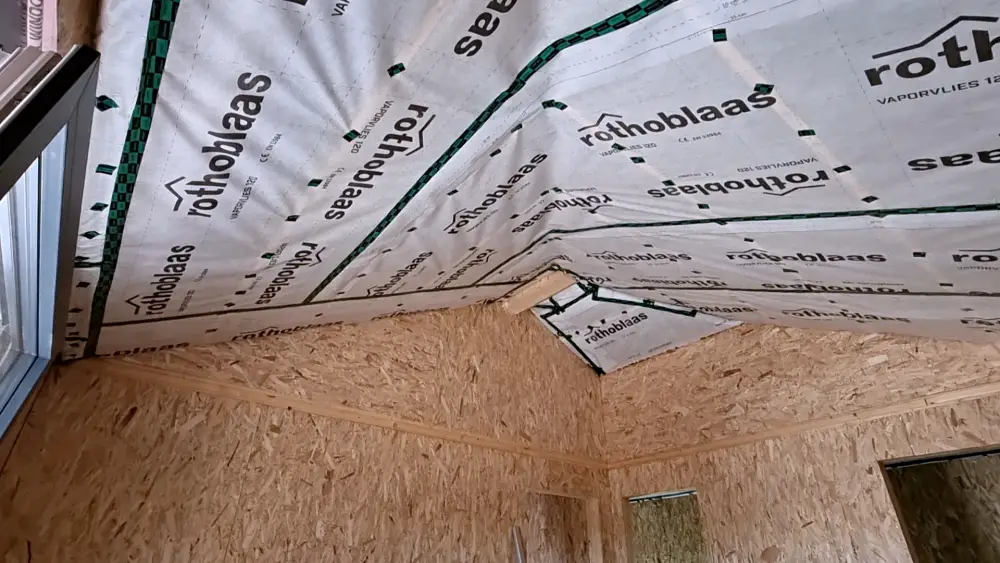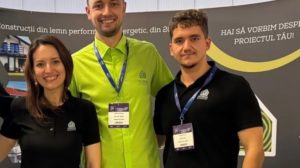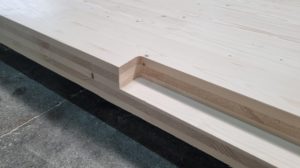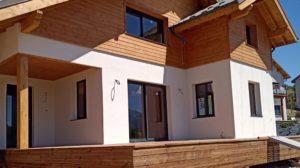House by the lake has been designed to be a passive house, which means a very energy-efficient home. No more than 15 kWh/m² per year, as required by the Passive House standard, must be consumed to maintain it. This means very good thermal insulation and minimizing air exchange with the outside, which is done with energy losses. After walls have been erected and the roof was built, the Litarh must now make sure that it is very well insulated and that the connections between roof and walls, walls and ceiling, between windows and wall do not allow air to pass through in any direction. How well and accurately this work has been done will be seen in the airtightness test. Preparations for this test can be followed in the video at the end of the article. For those who have not yet seen the Joseph family's journey to this point, watch here the other episodes.

Why leak testing
To achieve the energy performance of a passive house, the principles of construction are as follows:
- very good thermal insulation,
- as few or no thermal bridges as possible,
- high-performance window,
- airtight airtight envelope tested by leak test,
- quality indoor air with a ventilation and heat recovery system.
Air exchange with the outside depends on how well the envelope is made. The components of the envelope are the walls, roof, windows, doors, foundation, which must be connected so that there is no air exchange with the outside. If the thermal insulation is very good, with quality materials and a thick continuous layer, and if windows that meet passive house requirementsThese air exchanges remain the only culprits of heat loss in winter and external heat gain in summer. Air sealing means closing off any gaps where air could enter or leave the house uncontrolled.
Checking the air tightness of the tire is done with the leak test or blower door test, which tells us how much air is lost from the house in a given time and where. Many of the leaks are found at component joints and penetrations for electrical or water-channel routes.
Sealing is done using special membranes
Sealing the house is done with foil that is fitted continuously on the inside. Continuous means that it must cover the inside face of all the walls, roof, ceilings and the concrete floor slab (that balloon the design engineer talks about in the movie). In design, there is the pencil rule that says that on a section of the house design, you must be able to pencil over the seal coat without lifting it. Sensitive areas are around doors and windows, balconies that have exterior decking, penetrations for installing utility runs. For a perfect seal, attention must also be paid to the joint between the foils. They overlap and are held together with special adhesive tape.
These films are called vapor barrier films. They are membranes that are put on the back of the house insulation to prevent moisture from the air passing through it and condensing on the back wall. They are different from the anti-condensation sheets that are put on the roof, on the outside of the insulation. This protects the insulation from moisture that might otherwise reach it.
The separation between the anti-condensation film and the vapor barrier is done by a factor called vapour permeability Sd, expressed in meters. It represents the equivalent vapor permeability of an air layer of the same thickness. Membranes with Sd2m are vapor barriers.
Final work to seal the lake house perfectly
The erection of the Lakeside House is nearing completion and final checks are being made on the joints. Design engineer Constantin Tudosă, representing of the builder Litarh, explains below what work has been done to make the house as close to ideal as possible. The airtightness test will prove this. This is an intermediate test, carried out precisely to discover any leaks early on and fix them. At the end of all the work, when the house is finished, the test is repeated. But about how this test is done and what the results should be for a passive house in the next episode.




































Add comment